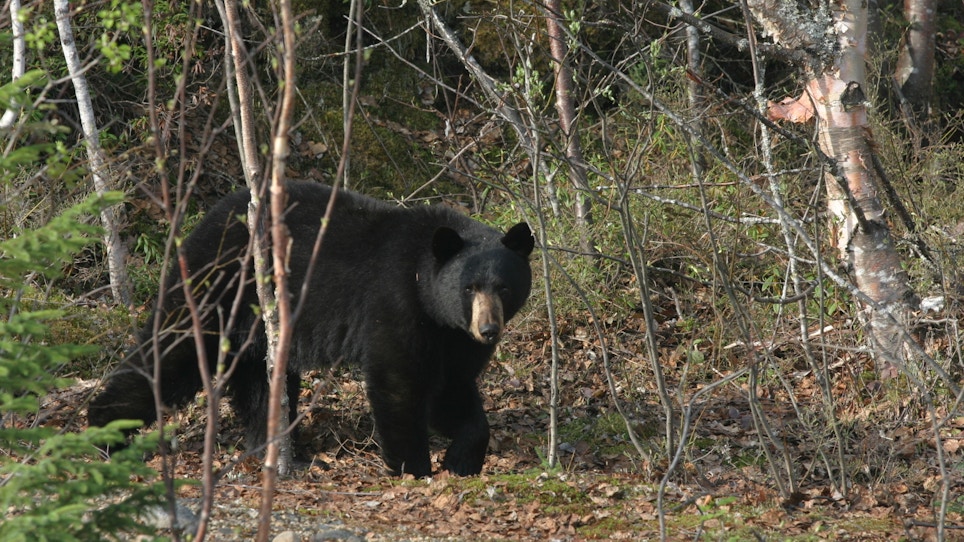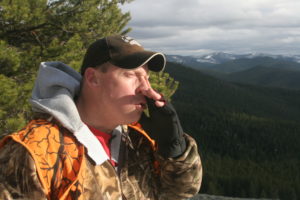
Spring black bear seasons offer hunters great opportunities to knock down a bruin and enjoy time in the woods. (Photo: Mark Kayser)
Are you ready to supersize your predator calling experience? Black bear seasons are opening across the country. Traditionalists employ bait tactics and hounds to tree bayed bears. A few use spot and stalk strategies, but if you really yearn for a memorable hunt you should consider calling to bring a black bear into shooting range.
Knowing their intricate behaviors and associated responses to your calls is the key to being successful when calling these supersized critters. And since black bears have a penchant for precarious attitudes, calling one in is akin to making yourself the bait. Your sounds will bring a bear right to you and it will likely already have a preset plan on what it wants to do when it finds the sound.
Bears vary in attitude and size. Small bears may tip the scales at 125 pounds or more, but mature boars can easily exceed 300 pounds and occasionally reach the magical 500 mark. These are big bears and they command the attention of all others in the woods, including you. When they approach a call they do so with assertiveness, confidence and decisiveness.
So how do you call a big boar out of the woods and into your sights for the memory of a lifetime?
Prey-In-Distress
Since bears eat almost anything, almost any desperate prey-in-distress call has possibility. Favorites you employ for calling in coyotes or fox can also lure bears. Cottontail rabbit distress, jackrabbit distress, squealing piglets and bawling fawns — in the West, a favorite is crying elk calves.
Calf in distress or bawling fawn calls works especially well when deer and elk begin nursery duty. Bears have excellent smell, and afterbirth in the air attracts them to high density ungulate populations to take advantage of a free meal. Call nearby and magic may happen.
As you wade through the numerous calls available, pay special attention to the use of electronic calls in the state you plan to hunt. Black bears are considered a game species, unlike coyotes, so the use of an electronic caller may not be allowed. This means you may have to go old school and utilize a hand call.
Practice and make sure your lungs are up to the challenge because you’ll need to call louder and for longer periods to attract a bear. Diaphragm calls work especially well for calf or cow in distress calls, plus you can make a number of distress sounds that are easily amplified with a megaphone.
Vary Your Calling
Most experts agree that even though you may want to begin your calling setup with a low-volume approach to possibly lure in a nearby bear, blowing your lungs out equals covering more country, especially in the openness of the West. You’ll also want to call in a continuous or nearly nonstop fashion. Black bears have a tendency to lose interest quickly if the sound quits.
That’s why many seasoned bear hunters hope to get a visual on a bear first. By spotting bears they can watch the demeanor of the bear as it reacts to the call and prepare for the shot so there are no surprise meetings.
Control Your Scent
To further help in your setup success scent control and setup location is imperative. Using quality scent elimination products, like Scent Killer from Wildlife Research Center, helps eliminate your human footprint. Attempt to select a downwind site that forces a bear into an upwind shooting lane. Think cliffs or rivers that force a bear to circle without scent superiority.
Lastly, watch your backdoor since the perfect setup site seldom transpires. Even small bears can have attitude, but you don’t want a surprise appearance by a 400 pounder with jaws popping. Hunting with a partner and sitting back to back makes sense to ensure that nothing arrives without an RSVP.
Be Prepared
Follow this advice from a veteran big game hunter: “Use enough gun.”
Safari hunter Robert Ruark coined that phrase and titled a book with it, and it holds true today, especially when going after bear. Bears are big, big boned, muscular and hairy.
Even a good hit with a medium-sized caliber could result in a questionable tracking job as the hair can sop up lots of blood. A big caliber, like a .300 Winchester magnum, combined with a proven bullet, like Hornady’s ELD-X, makes sense to make black bear calling memories.






